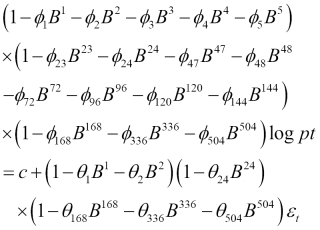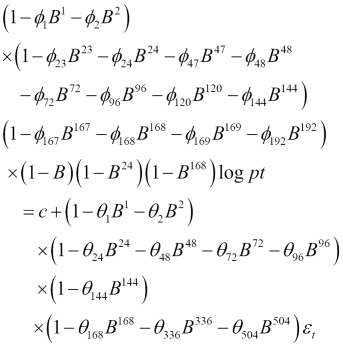Auto Regressive Integrated Moving Average (ARIMA) is a classic algorithm to analyze time–series data. As the initial step, an ARIMA model will be chosen to model the time-series data. Assuming that ![]() is a time-series variable such as a price, the formula is defined as follows, and it includes the main features of the variable:
is a time-series variable such as a price, the formula is defined as follows, and it includes the main features of the variable:



Predicting future prices is one subproblem of predicting the future; this is just a sign of the difficulty of this issue. Another similar issue under this domain is estimating the future market demands.
The stock market is a good example of predicting the future price; here, the prices changes along with time. Predicting future prices helps estimate the equity returns in the future and also helps in deciding the timing for financial investors, such as when to buy/sell.
The price graph shows an oscillation. Many factors can affect this value, even the psycology of humans.
The key problem in this prediction is the huge data volume. As a direct result, the algorithms to be used for this topic need to be efficient. The other key problem is that the price might change dramatically in a short time. Also, the complexity of the market is definitely a big problem.
The data instances for the future price prediction include quantitative attributes such as technical factors, and they also include macroeconomics, microeconomics, political events, and investor expectations. Moreover, they include the domain expert's knowledge.
All the solutions based on the aggregate disperse information from the preselected factors.
Price is obviously affected by time, and is a time-series variable too. To forecast the future value, the time-series-analysis algorithm will apply. ARIMA can be used to forecast the prices of the next day.
One classical solution is to determine the trends of the market at a very early stage. Another solution is fuzzy solutions, which is also a good choice because of the huge volume of dataset and wide range of factors affecting the prices.
